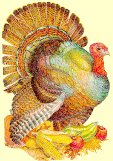

When you want to install the supplied Tur(n)key System, you will have have to setup the Hercules environment first. This process is described in the document Installing Hercules & Support Programs.
This part of the installation sets up the MVS environment on your Linux machine. First of all
you will have to specify into which directory the MVS system will be installed. The default is
the directory mvs38j in your home directory. The default can be overwritten in the
next screen:
Target directory definition Please enter the target directory, or press enter for default (mvs38j) The directory can be given as an absolute path, i.e. with a / character at the beginning, or as a relative path. In this case the path will be relative to /home/volker ===>
The Tur(n)key system comes with quite many DASD images. You can now decide to either copy them to your local hard disk (which would take up to 500 MB). or to leave them on the CDROM. You can also decide if you want to use shadow files (For more information on hercules and disk usage you should check the DASD Documentation for Hercules. The setup script will show the following screen:
Turnkey DASD location definition
1. Use DASD images from CD-ROM
(Somewhat slower, requires about 40 MB disk space)
2. Copy DASD images to local hard disk
(faster, but requires from 150 to 500 MB disk space)
3. Copy DASD images to local hard disk and use shadow files
(same space as above, allows easier fallback)
Your choice ===>
If you choose option 1, then the DASD images will be kept on the CDROM, and only the changes will be written to disk. This tends to put a severe strain on the CD-ROM drive, and there have been reported premature death of CD-Rom drives. Given today prices for hard disk space I would strongly recommend not to use this option.
Option # 2 will copy all the DASD images to the target drive into the dasd subdirectory of the installation directory. This is the easiest option, and is the default on this screen.
When you choose option 3, then all dasd images will be copied to the installation directory as well. But, the configuration file for Hercules will now indicate that shadow files are to be used, with other words, that changes are not written to the base file, but to a secondary dasd image file (the shadow file, you guessed it)
You might want to have all the dasd files installed, or you might want to choose just some of them. I have arranged the dasd images into 5 groups, out of which 4 groups are optional and can be unselected:
Next you will be asked about the operational parameters of your hercules instance:
Console Port (CNSLPORT) Definition Please enter the portnumber that Hercules should listen at for incoming telnet and/or tn3270 connections for its builtin telnet server ===> (3270)
The consol port (CNSLPORT) is the TCP/IP port number on which Hercules will listen to incoming telnet and/or tn3270 requests. The number shown is the default port number which will be selected when you just press [ENTER]. Please note that the port number has no relationship to the devicetype being used, i.e. a TN3270 session may well be connected to port 5555, and a device 3505 may well be connected to port 3270
Another TCP/IP port used by Hercules is the Socket Reader Device port. This port allows sending JCL streams to the MVS reader via a TCP/IP connection. Which port number should be used will be configured via the next prompt:
Socket Reader Device Port Definition Please enter the portnumber that Hercules should listen at for incoming data for the socket device card reader ===> (3505)
Again, if you just press [ENTER], the default port number shown will be used.
Hercules provides a (rudimentary) http server which can be used to control Hercules operations via a web browser. This server will listen to incoming http requests on the port number specified on the next question:
Web server port (HTTPPORT) Definition Please enter the portnumber that Hercules should listen at for incoming http requests to its builtin web server ===> (8081)
The time for questions is nearly over now. The setup script will now show the installation options so far:
Installation options: CPU Type is: i686 Source path: /mnt/cdrom Target path: /home/volker/mvs38j Type of installation: turnkey Location of Tur(n)key DASD images: HD Telnet console port: 3270 Web server port: 8081 Socket device port: 3505 Continue with Installation ===> (Y)?
Pressing the ENTER key will now complete the installation, and you will see the progress like this:
Installing Tur(n)key MVS 3.8J files: Building ./conf directory Building ./jcl directory Building ./scripts directory Installing startup scripts for linux-gnu Building ./dasd directory Copying PAGE disk images Copying SPOOL disk images Copying MVS system disk images Copying public volume disk images Copying Sortwork disk images Copying Scratch disk images Copying Starter system disk images Copying SMP disk images Building ./shadow directory Building ./prt directory Building ./pch directory Building ./tapes directory Press the ENTER key to continue
and, when you press ENTER now, the installation ends with the following screen:
+=============================================================================+ | | | Installation is now complete | | ============================ | | | | | | You can now change to the installation directory and start MVS 3.8 | | by entering | | | | startmvs | | | | on the command line | | | | | | Enjoy your private mainframe | | | +=============================================================================+ Press the ENTER key to continue
The Tur(n)key system has been setup with certain defaults as of number of master terminals, TSO sessions, etc.
The documentation in this cookbook referes to this default configuration. You may change the configuration
though at any time by either modifying the file conf/turnkey_mvs.conf manually or running the
service script setterm in the installation subdirectory.
You might now want to continue with an MVS IPL